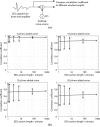Wearable EEG and beyond
- PMID: 30956880
- PMCID: PMC6431319
- DOI: 10.1007/s13534-018-00093-6
Wearable EEG and beyond
Abstract
The electroencephalogram (EEG) is a widely used non-invasive method for monitoring the brain. It is based upon placing conductive electrodes on the scalp which measure the small electrical potentials that arise outside of the head due to neuronal action within the brain. Historically this has been a large and bulky technology, restricted to the monitoring of subjects in a lab or clinic while they are stationary. Over the last decade much research effort has been put into the creation of "wearable EEG" which overcomes these limitations and allows the long term non-invasive recording of brain signals while people are out of the lab and moving about. This paper reviews the recent progress in this field, with particular emphasis on the electrodes used to make connections to the head and the physical EEG hardware. The emergence of conformal "tattoo" type EEG electrodes is highlighted as a key next step for giving very small and socially discrete units. In addition, new recommendations for the performance validation of novel electrode technologies are given, with standards in this area seen as the current main bottleneck to the wider take up of wearable EEG. The paper concludes by considering the next steps in the creation of next generation wearable EEG units, showing that a wide range of research avenues are present.
Keywords: Electrodes; Electroencephalography; Wearable.
Conflict of interest statement
The author has no conflicts of interest to declare.All procedures performed in studies involving human participants were in accordance with the ethical standards of the institutional and/or national research committee and with the 1964 Helsinki declaration and its later amendments or comparable ethical standards.Informed consent was obtained from all individual participants included in the study.
Figures












References
-
- Allen JJB, Kline JP. Frontal EEG asymmetry, emotion, and psychopathology: the first, and the next 25 years. Biol Psychol. 2004;67(1–2):1–5. - PubMed
-
- Casson AJ, Yates DC, Smith SJ, Duncan JS, Rodriguez-Villegas E. Wearable electroencephalography. IEEE Eng Med Biol Mag. 2010;29(3):44–56. - PubMed
-
- Debener S, Minow F, Emkes R, Gandras K, de Vos M. How about taking a low-cost, small, and wireless EEG for a walk? Psychophysiology. 2012;49(11):1617–1621. - PubMed
-
- Mihajlovic V, Grundlehner B, Vullers R, Penders J. Wearable, wireless EEG solutions in daily life applications: What are we missing? IEEE J Biomed Health Inf. 2015;19(1):6–21. - PubMed
Publication types
LinkOut - more resources
Full Text Sources
Other Literature Sources
Miscellaneous
